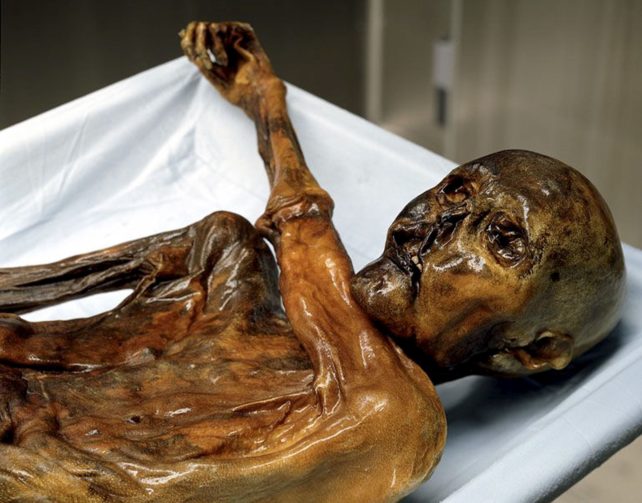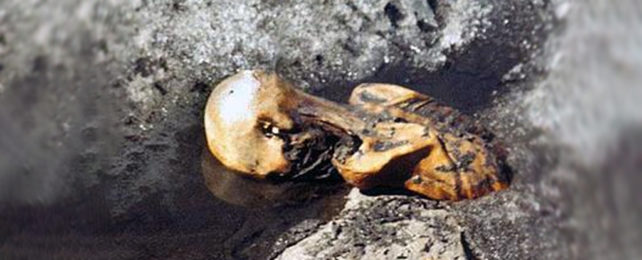The hikers who first stumbled onto a completely frozen mummy within a European alpine gully in 1991 must have received quite the shock.
Since then, the roughly 5,200-year-old murder victim, Ötzi the Iceman, has continued surprising people – including the archaeologists now studying him.
The Neolithic mummy was thought to have been preserved by a freak event that's unlikely to reoccur – that he was freeze-dried and encased in a glacier right after he was fatally shot in the back with an arrow.
But after a fresh analysis, archaeologist Lars Pilø from the Department of Cultural Heritage at the Innlandet County Council in Norway and colleagues now believe otherwise.
Ötzi (which rhymes with "tootsie"), is Europe's oldest known natural human mummy. He has been intensely researched in the 30 years since his discovery. We now know what he wore, that he had tattoos, what his last meal was, and even what he may have sounded like.
But had Ötzi been continuously frozen after his death, trapped in a kind of time capsule as originally thought, he would have been better preserved, Pilø and team argue in a new study.

Instead, only his lower half is still in pristine condition, whereas the skin on the back of his neck had flaked off to expose cranial bone, and his fur cape had fallen into pieces leaving his back naked.
What's more, an artifact found with the frozen mummy was originally thought to have been damaged during conflict prior to its owner's death, but Pilø and colleagues have concluded that the damage is consistent with something that could occur after the materials were deposited, especially if the surrounding ice repeatedly melted and refroze.
Ancient skis, arrows, and hunting equipment unrelated to this find also show similar breakages and wear as the artifacts found with Ötzi, suggesting they commonly occur during ice melt tumblings or the forces created by sliding ice.
"This evidence strongly suggests that the upper part of the body was exposed on several occasions prior to the 1991 discovery," write the researchers.
Pilø and colleagues explain that as the man's belongings had been found scattered up to 6 meters away, Ötzi may not have died where he was later found. The man likely met his end above the gully, buried by the spring snow, only to later be swept into the gully by meltwater.
"During hot summers, Ötzi and his artifacts were probably periodically exposed in the 1,500 years following his death," Pilø and team write in their paper.
Over the last few decades knowledge about such icy finds have substantially increased, allowing the researchers to see Ötzi's circumstances in a new way.
"A string of special circumstances is not needed for the preservation of this type of find, and relevant locations are now affected by heavy melt events," the team concludes, meaning this sort of mummification could be a more common occurrence than previously thought.
Climate change induced glacier melting has already also exposed the remains of people decades buried, artifacts, and incredibly well preserved ancient animals, like bears and wooly rhinos.
Who knows what else lies beneath, waiting for the thaw.
This research was published in The Holocene.
